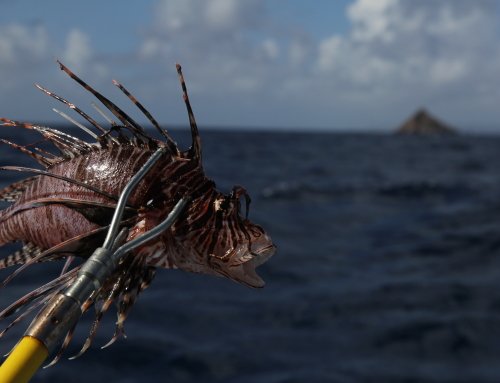
Ben, Tadzio Bervoets (the Manager of the Nature Foundation), Emma, and Teresa
Hi everyone, it’s Emma here! Last week, the Hello Ocean team had the chance to spend some time with the St. Maarten Nature Foundation, an awesome organization that is working to promote conservation of the island’s environment. The Nature Foundation does a range of work to help with shark conservation, and one of their projects is surveying the shark population in the area.
The baseline surveys of the shark population that they’re conducting are very important, because knowing the types, numbers, and locations of sharks helps inform researchers and policy makers about how to better protect these creatures. It also helps determine if marine parks and reserve areas are having an impact on the abundance and diversity of marine life forms in a particular area. The Nature Foundation is performing this survey throughout the whole island (which is half Dutch and half French), and this helps provide a comprehensive view of the local shark and fish population.

The Baited Underwater Remote Video (BRUV) System
How are they doing this? One of their main tools is a Baited Remote Underwater Video (BRUV) system. It’s made up of a metal frame with two cameras positioned on it, which allows researchers to accurately measure the lengths of the sharks that come into view. Attached to the frame is a canister that contains bait (usually anchovies), which is cut up to maximize the scent that travels through the water and attracts sharks. The BRUV is left in the water for one hour and then retrieved. The footage from the underwater cameras is then analyzed to record the types and numbers of sharks and fish that are seen.
The Nature Foundation team goes out and drops the BRUV at various locations around the island, and we got to go with the team for one of these drops! Take a look at this under water footage that the Nature Foundation got during one of its BRUV drops. A big thanks to the Nature Foundation for letting the Hello Ocean team tag along and see this work first-hand!






Leave A Comment